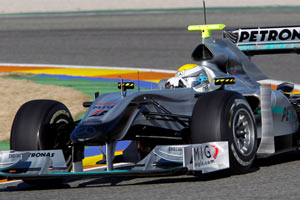pipex wrote:
Suspension kinematics & compliance requirements are dictated by the team’s vehicle dynamics engineering group and the tyre supplier. The suspension geometry must take into account a number of factors including; anti-squat, anti-lift, roll centre, camber change with bump and stiffness (especially toe and camber).
What is that kind of stiffness referred to in the quote?
installation stiffness of the suspension, also called elasto-kinematics.
In simple terms, when your wishbones,rims,wheelsbearings and/or uprights etc. deform under load, it can/will change the camber and toe settings of your car.
This can be intentionally, like in modern road cars, or by "mistake", making the parts not stiff/strong enough.
If designed into the suspension, it can help to tune the characteristic of the car.
If done by "mistake" it can make your life very difficult. Because your car does not responed in a "normal" manner, and not as you would expect/anticipate it to do.
As you try to make everything as light as possible in F1, you have to make some compromisses. (stiffness vs. weight).
No part on a race car is infinite stiff, but if you underestimate the loads, your car/component is going to see, you may have more deflection in your parts, then you would like.
Among other things, elasto-kinematic effects can be used to generate steering at the rear axle for example, so the car can become more or less OS/US under side loads.
Some road cars use it to make the rear wheels toe-in more during braking, to increase stability.










